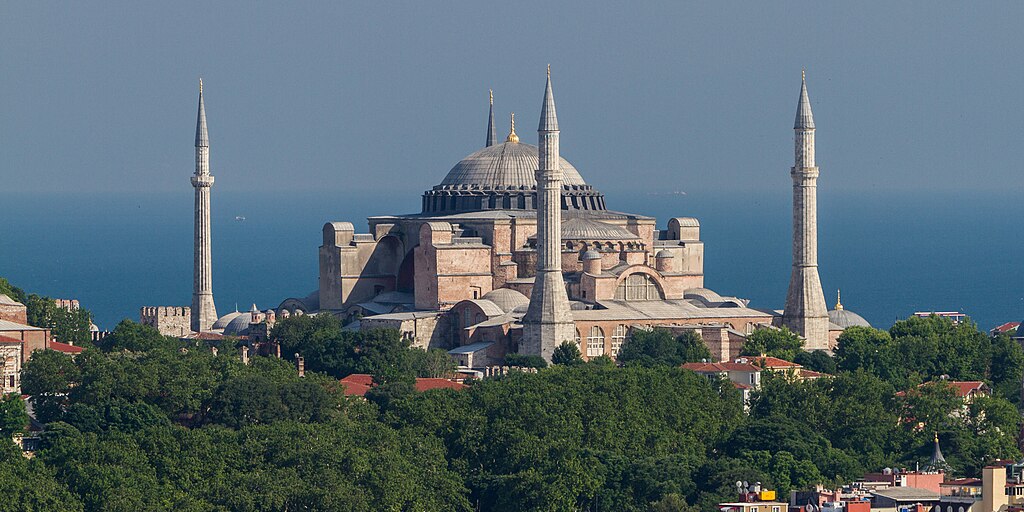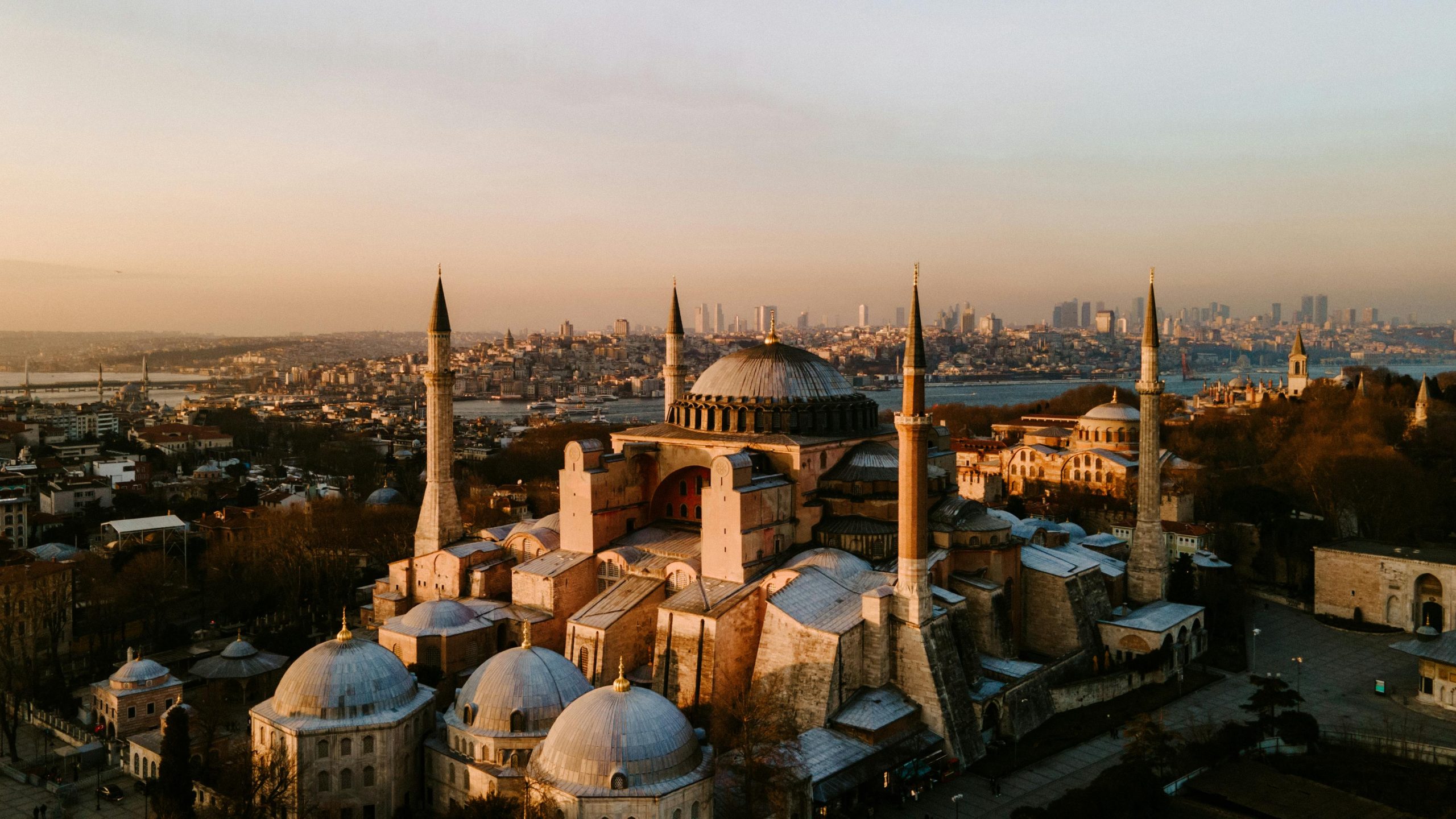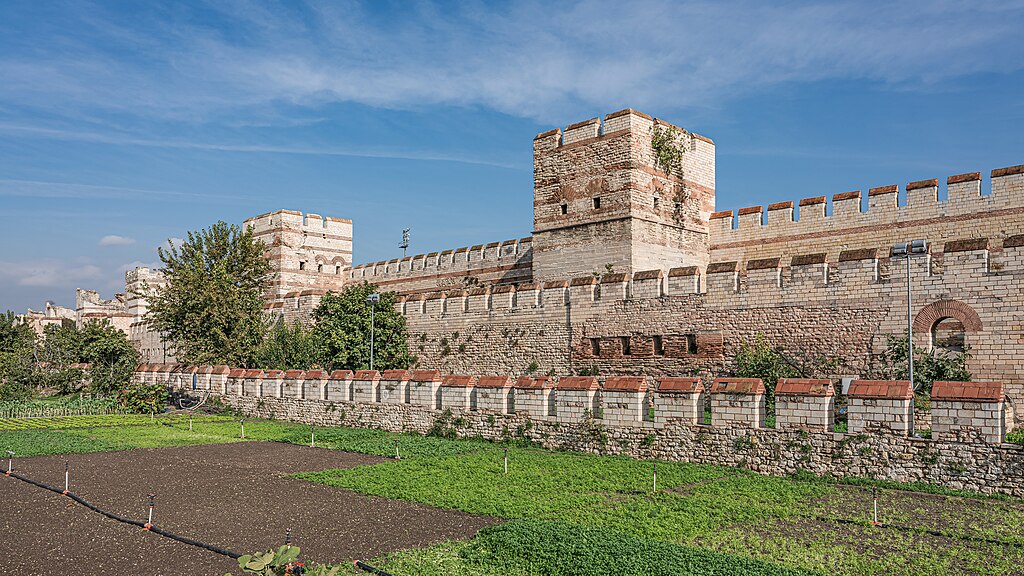Hagia Sophia, Istanbul
Cathedral and Mosque in Istanbul

Few buildings on Earth carry as much history and majesty as Hagia Sophia, the crown jewel of Istanbul. Built in the 6th century under Emperor Justinian I, this monumental structure began as the principal cathedral of the Byzantine Empire and stood as the spiritual heart of Eastern Orthodoxy for nearly a thousand years. Its immense dome, spanning over 30 meters and soaring 55 meters high, was so revolutionary that ancient writers claimed it was “suspended from heaven by a golden chain.” Today, Hagia Sophia remains one of the best places to visit in Istanbul, admired equally for its spiritual resonance and architectural daring.
Standing across from the Blue Mosque in Sultanahmet Square, Hagia Sophia is a highlight of any walking tour of Istanbul's Old Town. With mosaics that shimmer in gold and sunlight streaming through 40 arched windows, it's a space that humbles and uplifts in equal measure. Visitors still pause beneath the central dome, struck by its ethereal light and the sheer scale of a structure that has been both cathedral and mosque — a living monument to Istanbul's layered history.
History and Significance of Hagia Sophia
Commissioned by Emperor Justinian I and completed in 537 CE, Hagia Sophia was designed by the mathematician Anthemius of Tralles and physicist Isidore of Miletus. The emperor spared no expense, importing marble from Anatolia, Syria, and North Africa, and gold mosaic tiles from as far as Egypt. It served as the world's largest cathedral for nearly a millennium, symbolizing the unity of faith and empire in Constantinople, the “New Rome.”
When Sultan Mehmed II captured the city in 1453, he ordered Hagia Sophia to be converted into a mosque, adding minarets, a mihrab, and a minbar. Christian mosaics were covered but not destroyed, preserved beneath layers of plaster. The result was an extraordinary blend of Christian iconography and Islamic artistry that survives today. Declared a museum in 1935 and reconverted into a mosque in 2020, Hagia Sophia continues to function as a house of worship while welcoming millions of visitors every year. It remains one of the must-see places in Istanbul for those drawn to its grandeur and its story of transformation.
Touring Hagia Sophia
The main entrance through the Imperial Gate leads into the vast nave, where the scale of Hagia Sophia takes your breath away. On the way in, notice the Donation Mosaic above the doorway, depicting the Virgin Mary and Child flanked by Emperor Constantine offering a model of the city and Emperor Justinian presenting the church itself. Nearby, the Marble Lustration Jars — massive vessels carved from single blocks of stone and brought from Pergamon in 1580 — stand as testaments to the artistry of the Hellenistic world.
Don't miss the Wishing Column, easily spotted by its bronze casing and thumb-sized hole at shoulder height. Legend says if you rotate your thumb clockwise inside it, your wish will come true — though some claim it only works if your thumb emerges damp. In the center of the nave lies the Omphalion, a marble inlay where Byzantine emperors were crowned. Notice how the Mihrab, or prayer niche, is slightly off-center — a change made by the Ottomans to orient it toward Mecca. Above, enormous round medallions bear the names of Allah and the Prophet Muhammad, adding a powerful Islamic counterpoint to the Christian mosaics that still adorn the upper walls.
The Upper Gallery, reached by a dim, winding ramp, offers one of the most atmospheric experiences in Istanbul. The ramp once allowed sultans to ride on horseback to their viewing platform, and the stone walls still echo with centuries of footsteps. Upstairs, the Loge of the Empress, marked with green stone, provides the finest view of the nave below. Nearby, a marble block carved with Viking runic graffiti reminds visitors of how far the fame of Hagia Sophia spread, attracting Norse mercenaries serving in the Byzantine guard. The gallery also holds the church's most celebrated mosaics, including the Deësis Mosaic — depicting Christ flanked by the Virgin Mary and John the Baptist — and the 11th-century Empress Zoë and Comnenos mosaics, portraits of Byzantine rulers rendered in shimmering gold tesserae.
Before leaving, look up at the Dome Mosaics, high above the nave. Dating to the 9th century, these surviving depictions of the Virgin Mary and Christ Child are among the oldest in the building, radiant reminders of the faith and artistry that have endured through centuries of change. Touring Hagia Sophia is not just about seeing architecture — it's about walking through time itself, through layers of empire, devotion, and artistry that continue to shape Istanbul's identity.
How to Get There
Hagia Sophia stands in the heart of Sultanahmet, Istanbul's Old City, within walking distance of many major attractions. The T1 tram line stops at Sultanahmet, just a few minutes from the entrance. For visitors arriving by train, Sirkeci railway station is about a 15-minute walk away. You can use the official TCDD Taşımacılık website to check schedules, compare routes, and purchase tickets for Turkey's national and regional trains operated by TCDD. For a more streamlined experience (especially if you prefer an English interface or want to compare across countries), we recommend using Omio, which allows you to easily compare prices, schedules, and book train tickets across Turkey and the rest of Europe — all in one place. If driving, note that vehicle access is limited within the historic district, though there are paid car parks nearby, including one next to the Hagia Sophia complex. If you are looking to rent a car in Turkey I recommend having a look at Discover Cars, first, as they compare prices and review multiple car rental agencies for you.
Practical Tips on Visiting Hagia Sophia
- Best time to visit Hagia Sophia: Early morning or late afternoon to avoid peak crowds.
- Entrance fee in Euros: Around €1.50 (25 TL).
- Opening hours: Tuesday–Sunday, 9:00 AM–6:30 PM (closes earlier in winter); last entry 1 hour before closing.
- Official website: https://ayasofyacamii.gov.tr
- How long to spend: 1–2 hours to explore fully.
- Accessibility: Ground floor accessible; upper galleries require ramp access.
- Facilities: Ticket counters, restrooms, and gift shops nearby.
- Photography tip: The best light for interiors is mid-morning when sunlight enters through the dome windows.
- Guided tours: Highly recommended for understanding the art, history, and symbolism.
- Nearby food options: Restaurants and cafés around Sultanahmet Square serving Turkish coffee, kebabs, and meze.
Is Hagia Sophia worth visiting?
Undoubtedly. Hagia Sophia is not just one of the top sights in Istanbul — it's a world icon. Every brick, mosaic, and inscription tells a story of empires, faiths, and artistry blending over fifteen centuries. Whether you're a lover of architecture, history, or simply awe-inspiring spaces, standing beneath its great dome is an experience that defines any trip to Istanbul.
FAQs for Visiting Hagia Sophia
Do I need a ticket to enter Hagia Sophia?
No, entry is free, but donations for maintenance are appreciated.
Can non-Muslims visit during prayer times?
No, visitors are asked to wait outside until prayers conclude.
Are the mosaics still visible?
Yes, many mosaics have been carefully uncovered and can be viewed, especially in the upper galleries.
Is photography allowed inside?
Yes, but without flash and with respect for those praying.
Is there a dress code?
Yes. Modest clothing is required — women must cover their heads, and all visitors should cover shoulders and knees.
Nearby Attractions to Hagia Sophia
- Blue Mosque – A stunning Ottoman mosque famed for its six minarets and blue İznik tiles.
- Basilica Cistern – An atmospheric underground reservoir supported by marble columns.
- Topkapi Palace – The opulent residence of Ottoman sultans, overlooking the Bosphorus.
- Sultanahmet Square – The city's ancient Hippodrome and modern-day meeting point.
- Museum of Turkish & Islamic Arts – A collection of exquisite carpets, manuscripts, and ceramics.
The Hagia Sophia appears in our Complete Guide to Visiting Istanbul!
This website uses affiliate links which may earn a commission at no additional cost to you!
Visiting Hagia Sophia
Tuesday–Sunday, 9:00 AM–6:30 PM (closes earlier in winter); last entry 1 hour before closing.
Around €1.50 (25 TL).
Nearby Attractions
- Sogukcesme Street (0.1) km
Street in no_link - Hagia Irene (0.1) km
Church and Museum in Istanbul - Hurrem Sultan Hamam (0.2) km
Baths and Historic Building in Istanbul - Basilica Cistern (0.2) km
Historic Building in Istanbul - Stone of Milion (0.2) km
Historic Site in Istanbul - Sultan Ahmet Park (0.2) km
Park in Istanbul - German Fountain (0.3) km
Fountain in Istanbul - Istanbul Archaeological Museum (0.4) km
Museum in Istanbul - Arasta Bazaar (0.4) km
Bazaar in Istanbul - Topkapi Palace (0.4) km
Palace in Istanbul


